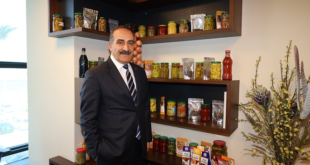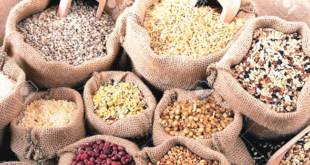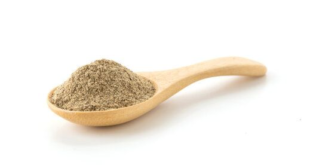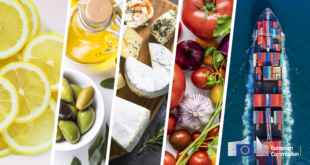Ever since I started dealing with agriculture and environmental issues, I realize that new windows are opening every day in my life. The “Permaculture design” education I had two years ago carried me to a completely different dimension. I was convinced that agriculture and food were very important and indispensable for our country, but I could not make suggestions on how and with which methods to achieve this success. Because the problems of agriculture did not really only belong to the present. Many years ago, with or without being aware of it, many people were turned off their axis, damaged and put in an inextricable situation by the institutions. As someone who tries to find solutions by looking at the future instead of questioning the past in consideration of the past, it was necessary to deal with agriculture and the sector in a different dimension. During this period, I came across new concepts for the improvement of agriculture. Holistic management, restorative agriculture, nature-friendly agriculture were just a few of them. I liked the phrase eco-friendly farming more. Because if we want to protect the environment from negativities, an environmentally compatible farming style seemed much wiser to me. In this way, we would have the opportunity to protect our land and water by farming without disturbing the balance of nature and protecting the environment.
HIGH NATURE VALUE, BUT HOW?
In short, we had to do a “high nature value” agriculture. But how? Generally, it may be a smarter approach to start by getting to know the answers to the “how” question, the geography we are dealing with. When we get to know our own country, it can be easier to do brain training on these concepts. But the first question is, how much do we know our country? Turkey, if 15.2% 72.2% overall depth shallower than 90 cm (20-50 cm) and shallow (0-20 cm) is comprised of soil. Although it varies from region to region, it has a “semi-arid” climate. Even though there are regional differences, the average annual precipitation is 646 mm. This geography, which is the junction point of Asia, Europe and Africa continents, is a key point of global biodiversity in terms of the development of various geomorphological and climatic conditions. Approximately 900 species of vascular plants and ferns are also the richest country in terms of flora compared to other countries in this climate zone with a 34% endemism rate. Recent studies show that a new vegetation is discovered once a week. Of the 468 bird species recorded in our country, 365 are seen regularly. We have 40 national parks, 31 nature protection areas, 105 nature monuments, 80 wildlife development areas and 14 special environmental protection areas. Approximately half of the total surface area of 77.9 million hectares of Turkey (53%) is used for crop and livestock activities. The average farm size of 6.1 ha., 83% more than the farmers and they have a small area of 10ha. between 1991 and 2001, the number of farmers in Turkey to 4.1 million from 3 million in a fallen state, even continues to fall worse .
WHAT IS CHANGING IN THE YEARS?
Since 1950, we can observe the effect of agriculture on nature under four main headings. These are: expansion of agricultural land, enhanced use of chemical inputs, increased irrigation and loss of ancestral agriculture. Every year, 1 billion tons of our soil and 87 million tons of plant nutrients are lost due to soil erosion. Perhaps more importantly, with the abandonment of their farms, we are losing our genetic varieties and breeds that belong to our flora. Currently, there are 20 cattle breeds, 19 sheep breeds and 5 goat breeds in our country. What about what we lost? 14 cattle breeds, 2 sheep 40, 2 goat races are completely lost.
WHERE IS THE SOLUTION?
The concept of high nature value (HNV) agriculture is an increasingly attractive topic for environmentalists and policies in Europe. This concept has emerged and started to be developed in the past 10-15 years in response to the realization and spread of certain farming methods in terms of protecting wildlife and biological diversity. In short, the reason why agriculture with high nature value adheres; It aims to protect species and habitats to prevent species extinction. The information that many of the habitats, which are described as high nature conservation value in Europe, were formed as a result of farmers and traditional (ancestral) farming methods, remind us that these farming systems should be continued in our own country. Thus, in many regions of our country, such agricultural systems will both support rural societies and shape rural cultures and traditions. The HNM concept brings an alternative and complementary approach to conventional nature conservation activities. Approximately half of the total surface area of 77.9 million hectares of Turkey (53%), considering that it is only being used for crop and livestock activities, we are doing what many of the remaining 47%, or what can we do? Isn’t this a national waste? As a country with such a wide diversity awaits new breakthroughs in agriculture, can HNV farming help create semi-natural habitats with its long history of traditional agriculture? If these 47% agricultural areas are located in marginal areas, if these lands are steeply sloping lands, if these lands are considered unsuitable for agriculture due to factors such as high altitude and low rainfall, it means that we have found exactly the areas we desire to do HNV. Because our farmers here try to continue their farming activities in the most difficult conditions (social, economic and environmental) and continue to face the pressure to abandon their traditional (ancestral) lives.
HIGH NATURAL VALUE IS IMPORTANT FOR AGRICULTURE, BIOLOGICAL DIVERSITY AND SUSTAINABLE AGRICULTURE
Turkey, in 1996, “Biodiversity contract” is signed. This convention is a very valuable convention aiming at the conservation of biological diversity (including agricultural genetic diversity) and the fair and equal sharing of genetic resources. Conservation of biological diversity that will contribute to the sustainable use of steppe areas and supporting the use of traditional knowledge will be an important perspective and a holistic approach for the sustainability of the country’s agriculture. All we have to do is; We have to produce a map showing the possible distribution of HNV farmland very quickly. To support the HNV farming system and to protect HNV farmland, we must implement measures in line with our ‘National rural development’ programs. And perhaps most importantly, we should encourage and encourage our farmers, who do “nature-friendly agriculture”.
By Professor Dr. Meltem Onay
15 November Cyprus University Vice Rector
 THE GLOBAL WINDOW OF TURKISH FOOD AND AGRICULTURE The Global Window of Turkish Food and Agriculture Sector
THE GLOBAL WINDOW OF TURKISH FOOD AND AGRICULTURE The Global Window of Turkish Food and Agriculture Sector









